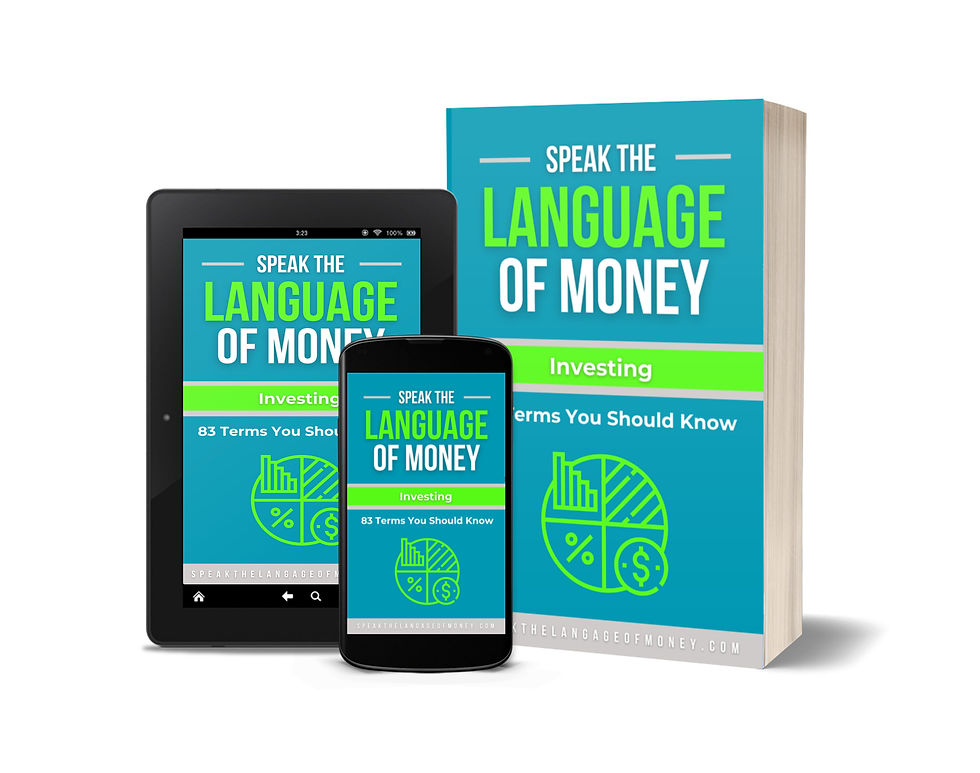Understanding Bonds: A Down-to-Earth Guide for Everyday Investors
- Larry Jones

- Jan 4, 2024
- 4 min read
Updated: Oct 5

Listen and Read
Introduction on Bonds
When it comes to the world of investing, 'bonds' is a term that often gets thrown around, but what exactly are they? In this easy-to-follow guide, we're going to demystify bonds for the everyday investor. Think of bonds as the steady, reliable friend in your investment circle – not as flashy as stocks, but definitely someone you can rely on in a pinch.
What is a Bond?
A bond is essentially a loan made by an investor to a borrower. This borrower could be a corporation, a municipality, or even the government. When you buy a bond, you're lending out your money to these entities, and in return, they promise to pay you back the principal amount on a specified date, known as the maturity date. The benefit for you as the bond purchaser? You'll receive periodic interest payments, often referred to as coupon payments.
Why Invest in Bonds?
Stability and Security: Bonds are often seen as a safer investment compared to stocks. They can provide a steady stream of income through regular interest payments, which is particularly appealing to those looking for a more predictable return on their investment.
Diversification: Adding bonds to your investment portfolio can help balance the risk. Since they usually don't move in the same direction as stocks, they can be a good way to diversify your investment strategy.
Income Generation: For those who need a consistent income stream, such as retirees, bonds can be an excellent choice. The regular interest payments can serve as a reliable source of income.
Types of Bonds
Government Bonds: These are issued by governments and are considered extremely safe. Think of U.S. Treasury bonds – they're backed by the full faith and credit of the U.S. government.
Municipal Bonds: Issued by states, cities, or other local government entities, these bonds often come with tax benefits, making them an attractive option for certain investors.
Corporate Bonds: As the name suggests, these are issued by companies. They usually offer higher interest rates than government or municipal bonds, reflecting the higher risk.
Risks Associated with Bonds
While bonds are generally considered safer than stocks, they are not without risks. Understanding these risks is crucial for any investor:
Credit Risk: This is the risk that the issuer might default on their payments. Corporate bonds are particularly susceptible to credit risk, as companies can go bankrupt. Government bonds, especially from stable governments, typically have lower credit risk.
Interest Rate Risk: Bond prices and interest rates have an inverse relationship. When interest rates rise, bond prices typically fall, and vice versa. This is particularly relevant for long-term bonds.
Inflation Risk: The risk here is that the return on your bond might not keep up with the rising cost of living. If inflation outpaces the interest earned on bonds, your investment could lose purchasing power.
How to Buy Bonds
Bonds can be purchased in several ways:
Directly from the Issuer: Governments often sell bonds directly to the public. For example, you can buy U.S. Treasury bonds through the TreasuryDirect website.
Through a Broker: Corporate and municipal bonds are typically purchased through a brokerage firm. This provides access to a wider range of options but may come with additional fees.
Bond Funds: These are mutual funds or ETFs that pool money from many investors to buy a diversified portfolio of bonds. This is a convenient way to gain exposure to a variety of bonds with a smaller investment.
Bond Laddering
A popular strategy for managing bonds is bond laddering. This involves buying bonds with different maturity dates. As each bond matures, you reinvest the principal in a new, long-term bond. This approach can help manage interest rate risk and provide a consistent income stream.
The Role of Bonds in a Diversified Portfolio
Including bonds in your investment portfolio can provide balance. While they generally offer lower returns than stocks, they also usually come with lower risk. For long-term investors, bonds can provide a cushion against the volatility of the stock market. They're particularly appealing for those nearing retirement, who may not have the time to recover from stock market downturns.
Bonds vs Stocks
It's important to understand the fundamental differences between bonds and stocks. Bonds are a form of debt, while stocks are equity. This means when you purchase a bond, you're lending money; when you buy a stock, you're buying a piece of ownership in a company. Stocks typically offer higher potential returns but with higher risk, while bonds provide more stability and predictable income.
The Future of Bonds
The bond market is constantly evolving. Factors like changes in interest rates, economic growth, and geopolitical events can impact the bond market. Staying informed and understanding how these factors affect your investments is key to successful bond investing.
Conclusion
Bonds, with their promise of regular income and relative safety, can be a cornerstone of a well-rounded investment portfolio. Whether you're a seasoned investor or just starting, understanding the ins and outs of bond investing is crucial. Remember, the best investment strategy is one that aligns with your financial goals, risk tolerance, and time horizon.






Comments